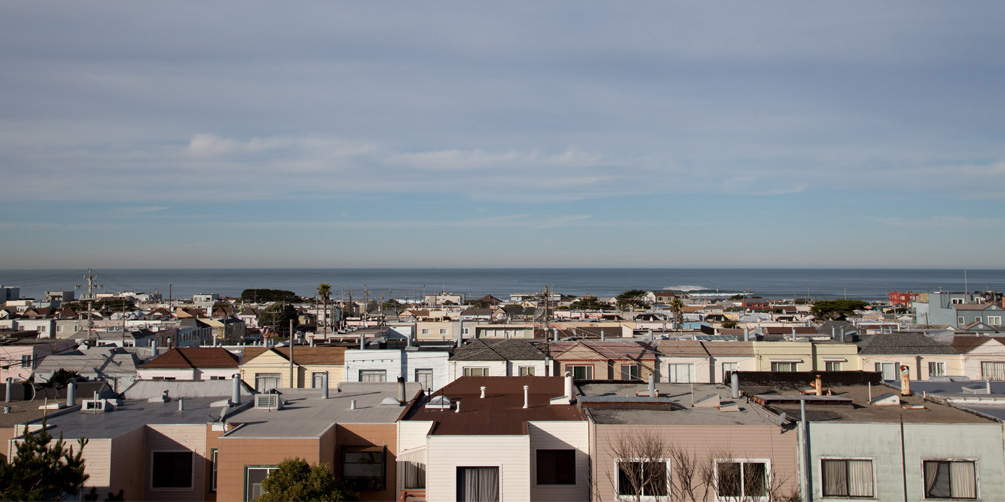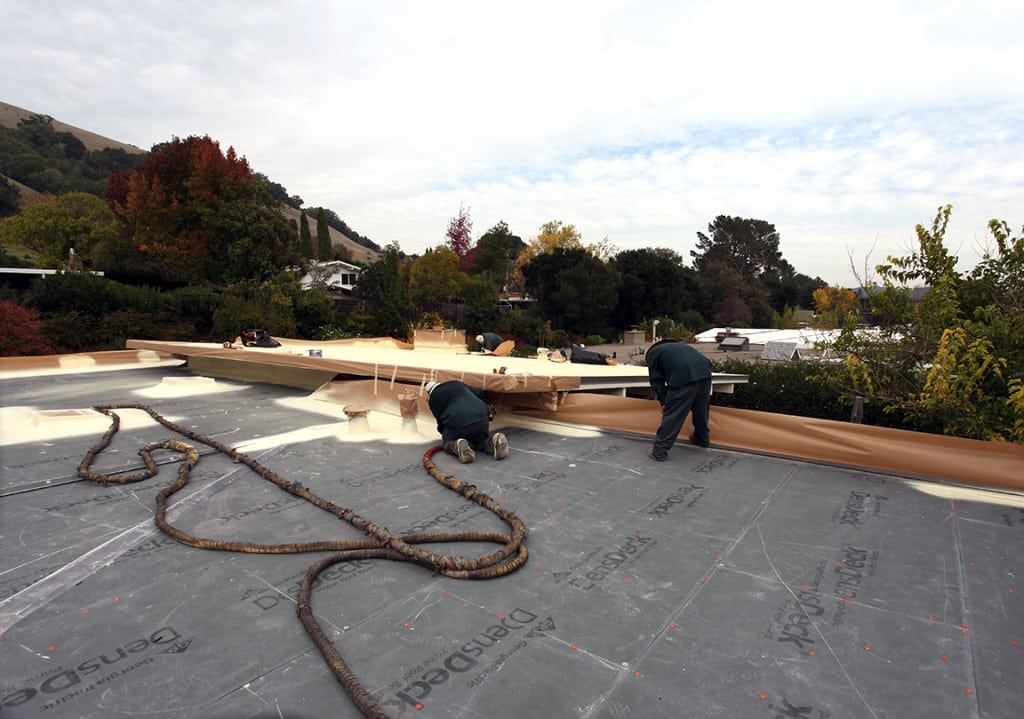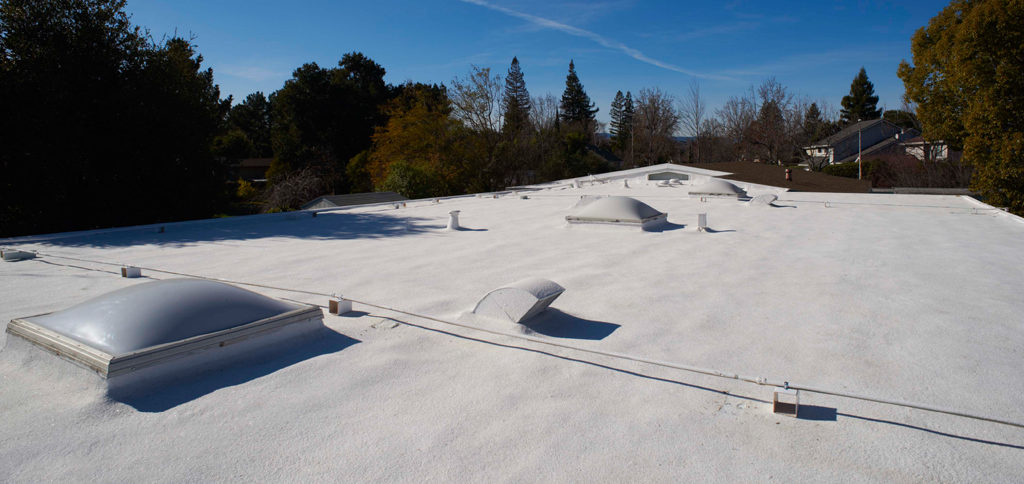If you own a home, a multi-story building or a commercial facility with a flat roof in San Francisco, you know how challenging it can be to find the right roofing material. Flat roofs are prone to leaks, ponding water, thermal shock, and UV damage. You might be tempted to choose a traditional roofing material, such as tar and gravel roofing, metal, single-ply membrane, or modified bitumen. Unfortunately, these materials can crack, warp, rust, or peel over time, requiring frequent repairs or replacements. They can also increase your energy bills by absorbing heat and making your building hotter in the summer.
So what roofing material should you choose for your flat roof in San Francisco? The answer is foam roofing. Foam roofing, also known as spray polyurethane foam (SPF) roofing, is an innovative roofing system used since the 1970s that offers many benefits for flat roofs. We would like to explain why foam roofing may be the best choice for your flat roof in San Francisco.
Why Flat Roofs in San Francisco Need Special Attention
San Francisco’s climate is known for its mild temperatures, foggy mornings, and frequent rainfall. These conditions can take a toll on your roof, especially if it’s flat. Here’s why flat roofs in San Francisco need special consideration:

Moisture Resistance
The city’s close proximity to the ocean means that San Francisco experiences a significant amount of moisture in the air. The ocean air contains salt water, which can corrode the metal and paint on the roofs. In addition, the ocean winds can be very strong and damage the shingles, tiles, and metal sheets on the roofs. Furthermore, the ocean moisture can create mold and mildew growth on the roofs, which can eat away the sealants and cause leaks.
Temperature Fluctuations
San Francisco’s climate can be unpredictable, with temperature variations throughout the day. Traditional roofing materials can expand and contract, leading to cracks and leaks. According to climate data, San Francisco has an average daily temperature range of about 14 °F, which means that the temperature difference between the minimum and maximum values during a day is 14 °F on average. However, this range can vary depending on the season, the location, and the weather conditions. For example, in summer, the temperature range can be as low as 7 °F in some areas near the coast, where the fog and the breeze keep the temperature cool throughout the day, while it can be as high as 29 °F in some inland areas, where the temperature can rise significantly during the afternoon.
These temperature fluctuations can affect the traditional roofing material for flat roofs, which are typically made of asphalt, tar, rubber, or metal. These materials tend to expand when heated and contract when cooled. If the expansion and contraction are not uniform or consistent, they can create stress and strain on the roof surface and structure. This can result in cracks, gaps, and leaks that can compromise the roof’s integrity and performance.
Energy Efficiency
Given the city’s focus on sustainability and energy conservation, it’s essential to choose a roofing material that can help regulate indoor and outdoor temperatures efficiently.
Indoor
The right roofing material can lower the energy consumption and costs for cooling and heating. Flat roofs that are not well insulated or ventilated can transfer heat to and from the indoor space, which can increase the demand for air conditioning in summer and heating in winter. This can result in higher energy bills and greenhouse gas emissions. By using flat roofing materials that have high thermal resistance and low thermal conductivity, such as spray foam roofing, flat roofs can prevent heat loss or gain and maintain a comfortable indoor temperature.
Outdoor
Flat roofs in San Francisco can also contribute to the urban heat island effect by absorbing and radiating heat from the sun, which can increase the ambient temperature and affect the local climate. By using cool roofing materials, such as light-color foam roofing that reflect more sunlight and emit less heat, flat roofs can lower their surface temperature and reduce the heat island effect.
Foam roofing can extend the lifespan and durability of the roof as well. Flat roofs that are exposed to high temperatures and UV rays can deteriorate faster and require more frequent repairs or replacements. This can increase the maintenance costs and environmental impacts of the roof. By using flat roofing materials that are resistant to weathering, and corrosion such as foam roofing, flat roofs can last longer and perform better.
Therefore, choosing flat roofing material that can help regulate indoor temperature efficiency is important for homes and businesses with flat roofs in San Francisco, as it can benefit them in terms of environmental, and economic aspects.
Why is Foam Roofing the Best Choice for Your Flat Roof in San Francisco?
It’s clear that foam roofing offers many advantages for flat roofs in general. But why is foam roofing especially suitable for flat roofs in San Francisco? Here are some of the reasons:
Fog Resistance
San Francisco is famous for its foggy weather, which can leave behind a layer of moisture on flat roofs. This can cause mold growth, corrosion, or rotting on traditional roofing materials. Foam roofing, on the other hand, is airtight, watertight, and vapor tight. This means that foam roofing can prevent moisture from penetrating or accumulating on your roof, even in foggy conditions.
Wind Resistance
San Francisco is also known for its windy weather, which can cause damage to flat roofs by lifting or tearing the roofing material. Foam roofing has a high resistance to wind uplift and can withstand wind speeds of up to 200 mph. This means that foam roofing can stay intact and secure on your roof, even in windy conditions.
Temperature Resistance
San Francisco has a mild climate, but it can also experience temperature fluctuations throughout the day and the year. This can cause thermal shock on flat roofs, which is the expansion and contraction of the roofing material due to temperature changes. Thermal shock can cause cracking or warping on traditional roofing materials. Foam roofing, on the other hand, can expand and contract with temperature changes without cracking or warping. This means that foam roofing can adapt to the temperature fluctuations on your roof, even in variable conditions.
How to Choose a Foam Roofing Contractor in San Francisco?
If you’re convinced that foam roofing is the best choice for your flat roof in San Francisco, you might be wondering how to find a reliable and professional foam roofing contractor near you. Here are some tips to help you choose the right contractor for your flat roofing project:
Credentials
Make sure that the contractor is licensed, insured, and certified by reputable organizations such as the Spray Polyurethane Foam Alliance (SPFA) or the National Roofing Contractors Association (NRCA). This will ensure that the contractor meets industry standards and follows the best practices for foam roofing installation and safety.
Experience
Look for a contractor that has at least 10 years of experience in foam roofing installation and repair in your area. This will ensure that the contractor has the skills and knowledge to handle any challenges or issues that might arise during your project. You can also ask for references or testimonials from previous customers to verify their work quality and customer satisfaction. Additionally, you can expect that the contractor will be around if anything goes wrong with your roof.

Warranty
Look for a contractor that offers a long-term warranty on both the materials and the labor for your foam roofing project. This will ensure that you’re covered in case of any defects or problems with your foam roof in the future. A good warranty should last at least 10 years.
Why Choose Armstrong Foam Roofing as Your Roofing Contractor?
If you’re ready to get started with your foam roofing project in San Francisco, don’t hesitate to contact Armstrong Foam Roofing. We were one of the first roofing contractors in San Francisco to offer home and business owners spray foam roofing. We have over 40 years of experience in foam roofing installation and maintenance. In fact, Armstrong Foam Roofing has installed more residential foam roofing than any other company in America!
We offer high-quality materials, professional workmanship, and competitive prices. Armstrong Foam Roofing has developed a foam roofing installation process that will ensure that every roofing system is installed properly and under the correct conditions so that it can last a lifetime. We are so confident in our installation process that we offer all our roofing clients some of the most comprehensive warranties in the foam roofing industry.
If you’re considering adding spray foam roofing to your property, contact Armstrong Foam Roofing for your no-obligation Satellite Roof Estimate. You can also arrange a remote free consultation, either by phone at 1-887-777-1234, via computer, Skype, or by email. Along with all the virtual ways we are providing estimates, we also offer at-home (outside) estimates for your convenience. Don’t settle for less than the best when it comes to your flat roof in San Francisco. Choose foam roofing and enjoy the benefits of a durable, weather-resistant, energy-efficient, and low-maintenance roofing system.

